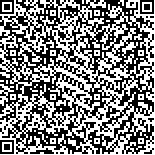沈晓艳、刘若兰、沈沉、田峻.电针对阿尔茨海默病模型大鼠学习记忆能力及海马NSF表达的影响[J].中华物理医学与康复杂志,2016,38(5):340-343
扫码阅读全文

|
| 电针对阿尔茨海默病模型大鼠学习记忆能力及海马NSF表达的影响 |
|
| |
| DOI: |
| 中文关键词: 阿尔茨海默病 电针 海马 AMPA受体 NSF |
| 英文关键词: Alzheimer′s disease Electroacupuncture Hippocampus N-ethylmaleimide-sensitive fusion factor AMPA-receptor |
| 基金项目:湖北省自然科学基金项目(2012FFA095) |
|
| 摘要点击次数: 2245 |
| 全文下载次数: 3095 |
| 中文摘要: |
| 目的 观察电针对β淀粉样蛋白25-35(Aβ25-35)所致的阿尔茨海默病(AD)模型大鼠学习记忆能力及海马CA1区N-乙基马来酰亚胺敏感蛋白(NSF)表达的影响,探讨电针防治AD的作用机制。 方法 选取健康雄性SD大鼠40只,按照随机数字表法将其分为正常组、假手术组、模型组和电针组,每组10只。模型组与电针组双侧海马注射寡聚态Aβ25-35制备AD大鼠模型,假手术组在相同部位同法注射等量的生理盐水。造模成功后第1天开始,电针组选取双侧“肾俞”、“百会”穴进行治疗,每日1次,每周6次,共治疗2周。在电针组大鼠行电刺激时,正常组、模型组和假手术组仅给予同样的抓取和固定动作。电针治疗结束后第2天,采用Morris水迷宫测试对各组大鼠进行学习记忆能力检查,测试结束后第2天,取海马组织采用免疫组织化学法检测CA1区NSF表达的累计光密度值(IOD)。 结果 电针组大鼠逃避潜伏期[(42.09±2.24)s]明显低于模型组大鼠[(61.70±3.02)],电针组大鼠穿越平台次数[(7.70±0.67)次]显著多于模型组[(3.50±0.85)次],差异有统计学意义(P<0.05)。电针组大鼠NSF表达的IOD(1734.26±264.65)与模型组(771.50±195.28)比较,差异有统计学意义(P<0.05)。 结论 电针能有效改善AD模型大鼠的学习记忆能力,其作用机制可能与电针增加海马CA1区NSF的表达含量有关。 |
| 英文摘要: |
| Objective To observe the effects of electroacupuncture (EA) on learning and memory ability and the expression of N-ethylmaleimide-sensitive fusion factor (NSF) in experimental Alzheimer′s disease (AD) and to explore the mechanism involved. Methods Sixty healthy, male Sprague-Dawley rats were randomly divided into a normal group, a sham operation group, a model group and an EA group, each of 15.The model group and the EA group were injected with Aβ25-35 bilaterally in the CA1 area of the hippocampus, while the sham operation group was injected with the same amount of normal saline in the same regions. From the 1stday after the AD model had been established successfully, EA was applied to the Shen Shu (BL23) and Bai Hui (GV20) acupoints in the EA group once a day,6 days a week for 2 weeks. No EA was given to the other 3 groups. After the treatment, Morris water maze tests were conducted to determine assess the rats′ learning and memory ability, and immunohistochemical methods were used to test the expression level of NSF in the CA1 areas of the rats′ hippocampus. Results The average escape latent period of the EA group was significantly shorter than that of the model group and their average platform crossing time was significantly longer. The average expression of NSF in the EA group measured as integrated optical intensity was significantly higher than that in the model group. Conclusion EA can effectively improve learning and memory ability in AD, at least in rats. The mechanism may involve increasing the expression of NSF in the CA1 area of the hippocampus. |
|
查看全文
查看/发表评论 下载PDF阅读器 |
| 关闭 |